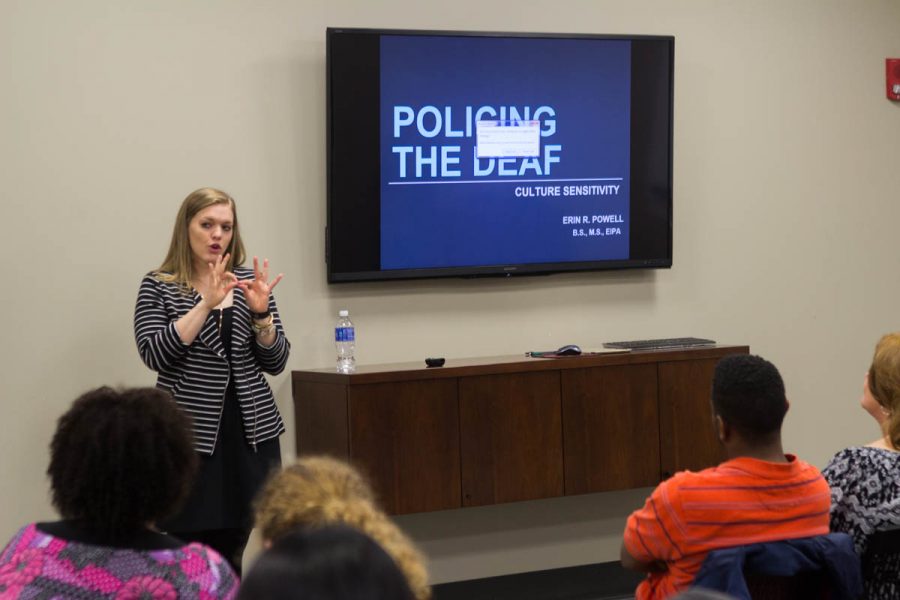Members of both the hearing and Deaf communities came together on Monday night to hear Erin Powell, professional American Sign Language interpreter discuss complications that arise when law enforcement and the Deaf community interacts. The event, held in the Ferguson Student Center and entitled “Policing the Deaf: Culture Sensitivity,” drew around 40 people, including three Deaf individuals and one police officer. It was co-sponsored by DEAF Hands Speak and the Department of Communication Studies.
In her presentation, Powell discussed both communicative and cultural barriers that cause misunderstandings between the Deaf community and law enforcement, emphasizing the need for more training, resources, patience and cultural education in police departments.
She also talked about the Americans with Disabilities Act (ADA) and what services Deaf individuals are entitled to when they come in contact with law enforcement.
Powell lamented that the ADA has not done all that it needs to in order to provide equal access to people with disabilities and eliminate discrimination.
“[If it had] I wouldn’t be speaking here,” Powell said.
Officer Rachel Grooms from UAPD attended the event as part of her work in the Community Oriented Policing division. She said her goal is to be involved with the student population as much as possible.
“Let’s break the barriers…so it’s not always just uniforms that [students] are seeing,” Grooms said. “I have tried to be on the same level with my students because that’s really the only way that we make a difference.”
Grooms asked questions throughout the night in order to gain a clearer understanding of how she as a police officer should handle a situation with a Deaf individual.
Powell discussed her job as an interpreter as well. She made sure to discuss the Deaf community separately from law enforcement, working to give the audience a more accurate understanding of the proud community. For instance, Powell explained the difference between being Deaf and deaf. The former describes a person who identifies with Deaf culture, while the latter is someone who sees their hearing loss as simply a medical condition.
Cecilia Ciaccia, freshman communicative disorders major and DEAF Hands Speak member, enjoyed the event. She felt Powell was engaging and that the presentation did a great job of briefly explaining some of the key misconceptions that the hearing community has about the Deaf community.
“The event reinvigorated my passion for a possible career in deaf education,” Ciaccia said.







